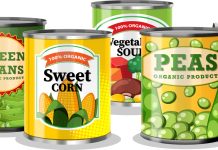 Biomasses are renewable resources that are found in abundance in industrial or agricultural wastes (straw, grass cuttings, sawdust) and can be used as raw material for the production of so-called organic materials or Biobased Materials.
Biomasses are renewable resources that are found in abundance in industrial or agricultural wastes (straw, grass cuttings, sawdust) and can be used as raw material for the production of so-called organic materials or Biobased Materials.
For example, biopolymers are a very wide class comprising following three classes:
(i) Natural biopolymers, which are polymers produced by living organisms, such as plants, microorganisms and seaweed. The most abundant natural biopolymers are cellulose, starches, chitin and plant proteins. In particular, alginate, cellulose, carrageenan and starches are the polysaccharides with the widest range of applications in the food industry;
(ii) Synthetic biopolymers, among which there is poly(lactic acid) (PLA), which is a biodegradable and compostable polymer obtained by industrial fermentation;
(iii) Bio-based polymers from engineered materials, i.e. chemically synthesized from microorganisms such as PHA (poly-hydroxylkanoates).
Environment-material interaction
In general, all these materials are eco-friendly, although it is not possible to say whether a material is good or harmful to the environment only by referring to its origin. In fact, it is necessary to assess on a case-by-case basis the interaction of the material with the environment, the processing conditions for its production, the additives used in its formulation, the use of the material by the end consumer and the type of disposal at the end of its life-cycle.
For example, the biodegradability of a material is not directly related to the concept of bio-materials, since it is not linked to the origin of the material, but rather to its chemical structure. It can occur that of two different materials from the same raw material, one is degradable and the other is not. The only sure advantage of using renewable resources is that biomaterials are “carbon neutral” or “carbon offset”, i.e. the amount of carbon dioxide released into the atmosphere during their incineration is equal to the amount of carbon dioxide used for their production and thus the overall balance is zero.
However, in addition to this undoubted benefit, there are also a number of issues to be considered. For example, the use of plant biomass can lead to a negative impact on the environment due to deforestation, the use of fertilisers and pesticides. In addition, the quality and quantity of biomass produced may vary as a result of various factors (climatic, environmental, etc.) that make supplies uncertain.
There is also an open controversy about the use of agricultural land to produce biomaterials instead of food, which leads to an increase in the price of staple cereals such as maize. Biomaterials produced from seaweed face the same problems of variability of the materials produced from plant biomass, with marine pollution aggravating the problem. Many of these drawbacks are overcome if residues or by-products of other processes are used as biomass or if micro-organisms are used for the production of materials, which is why they are called “microbial biomass”.
The advantage of using microbial biomass for the production of new materials is that it is a completely renewable source without the problems of using plant biomass. In fact, these biopolymers are on average more expensive than plant-based polymers. However, costs can be reduced by introducing new low-cost microbial culture methods and media, along with exploring alternative sources of carbon and nitrogen.
New sources of biopolymers
In this context, a study by C. Cottet et al. (Materials 13, 2020, 1263, doi: 10.3390 / ma 13061263) focused on the use of new sources of biopolymers to develop biodegradable materials. In particular, the study focused on fungal biomass, which is an economical and abundant source of biopolymers and represents an important residue from the brewery industry and other biotechnological processes, where biomass is discarded after the final product is obtained.
Fungal biomass grows on any organic material containing cellulose and can therefore play a role as a natural aggregator to obtain new materials. Depending on the type of fungus, substrate and post-growth treatments, different materials can be obtained. Once activated, the growth process can be blocked through heat, and the resulting material becomes inert. Each portion of the fungal biomass has interesting characteristics to produce new materials, such as:
* the cells are rich in proteins and polysaccharides, which can be used to produce packaging materials;
* the mycelium, which is the vegetative apparatus of fungal biomass and is formed by a dense interweave of filaments called hyphae, can be used for materials suitable for wrapping food, as an alternative to traditional polyurethane films;
* the yeasts, which are a large group of fungi conventionally used in fermentation processes, can be used in the encapsulation of bioactive compounds (aromas, etc. ) and other molecules. One of the advantages of the encapsulation in yeasts is that the encapsulated substance can be released in a controlled manner depending on the environment in which it is found.
The yeasts can also be used to produce films and coatings; for example, a good film-producing material is represented by the cells of the yeast Saccharomyces cerevisiae, which for thousands of years has been used for the production of wine, bread and beer and is therefore the most used type of yeast in the industry. The cells of this yeast are a cheap natural food ingredient, with a high propensity to form biodegradable films.
In conclusion, the results of this study show the good performance of microbial biomass in forming new materials, with functional properties suitable for different applications. The importance of this topic is linked to the fact that there is a huge amount of biomass in nature capable of forming new materials which are not yet fully exploited.
These unconventional sources of biopolymers could help produce new materials with good properties, reducing our impact on nature. The challenge for researchers and industry is therefore to exploit their potential by proposing new processes and formulations in order to adapt the properties of these new biomaterials to any specific application.
References: Cottet et al., Materials 13, 2020, 1263; doi: 10.3390 / ma13061263



